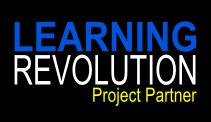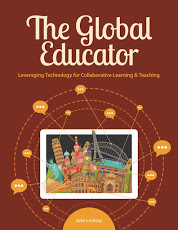Presenter: Colby Ratzlaff
Location: Emporia, Kansas USA
Twitter: @ColbyRatz
Presentation Title: The Life Practice Model: a real life example
Presentation Description: Hear a freshman tell the educational story of the last 4 years of his schooling, from August 2006-May 2010, after his parents decided that traditional school wasn’t fully meeting his needs. Colby attended Turning Point Learning Center, an innovative public charter school in Kansas, utilizing 1:1 laptops, and Web2.0-infused Project Based Learning.
DotSub Video Presentation Link
Blip m4v direct link (video file)
Blip mp3 direct link (audio file)
Online Portfolio:
sites.google.com/site/colbyratz/
Additional Information:
Twitter: @techmancolby








Wow! I wish I’d been able to go to a school like this. More importantly, I wish my daughter could learn like this. The 4 years you’ve spent will stand you in good stead for the future. I think you make a fascinating comparison between the freedom of ‘life practice’ learning with the narrowness of standards-driven high school learning.
Like Ginny said, Wow. This type of school though is not for everyone. some students would not be able to move forward and create the type of projects that are given. I think I might steal the whole skeleton ideo though and have my art students make own models. Love to see new ideas and all of this creative energy.
Actually, at this school we have students who come to us 2-3 grade levels behind and all are moving ahead. It’s precisely these types of projects that engage them and make them want to learn, grow, and come to school every day.
If you have students who struggle with school because they hate it or are bored with it (which describes ~98% of the US school population), these types of projects light them up!
I promise.
Engaged students = learners. Colby, thanks for sharing your perspective and enthusiasm.
Great job, Colby. It was insightful to hear your story, and it makes me reflect as a teacher about how to engage all sorts of students. Technology is one of those ways, for sure.
Kevin Hodgson
Learning outside the four walls” This school has allowed students with learning disablities to excel and get excited again in learning instead of getting discouraged and dealing with a lack of self esteem. What an awesome story.I have had personal experience with my own family where this type of learning could be of benefit. This is a case where using technology has expanded the minds and hearts(self esteem and respect) of not only the student speaking but assuming others as well. I really enjoyed this.
Pingback: Thing 13 | Andrea Reinsmoen
Pingback: Lessons Learned Teaching EdTech to PreService Education Students (Fall 2010) « Moving at the Speed of Creativity
This is an absolute great example of how technology can be used to enhance a person’s abilities(can technology incline learning be considered a new intelligence?). I believe this type of learning can be implemented in any school with the proper tools. The point made by Colby about learning from real life not from textbooks needs to be considered at all educational levels. Even thought the video does not go into details about preparing for state tests, it seems like these test are obstacles for productive learning. Did I get this message correct?
Definitely something a teacher should observe and learn from. To create the freedom for learning that is necessary in this environment is a bonus for students. Hands-on projects really help a good portion of the students retain information and increase the ability to use it in the future. Differentiated instruction is great in all realms of the educational process. Good job Colby.
Franciso,
I’m Colby’s teacher and the creator of the LifePractice model (along with the kids, parents, and the staff I hired on in the past half-decade of practice).
We didn’t concentrate on the state tests hardly at all. There was a brief formative test about a month before, to see what skills we needed specifically to brush up on. If kids did well on the formative >75-80%, the didn’t do any more prep. Those who had some struggles in place, we did brief workshop/tutorials in those areas and the kids with very low skills got more intense than the others.
Our assessment scores were fine and we met AYP all 5 of those years in Reading and missed once in math (we had a very small 8th grade class once and 1 kid didn’t meet standard, even though the score improved 20% from the year before). We also brought home more “Standards of Excellence” awards than the other schools in the district all of those years but 1.
While other schools were holding ice cream parties and rallies centered around the test, we were building Viking Ships, growing gardens, and video conferencing with a women’s school in Egypt.
The kids report that this approach kept them relaxed and our projects were all started on the foundation of those standards, but moved on to deeper learning from there.
Did our highest scorers go down a few points? Maybe. But again, the test wasn’t our focus. They still met the minimum requirements that most schools hold up as “high achieving.” We noticed those scores and just kept learning Life.